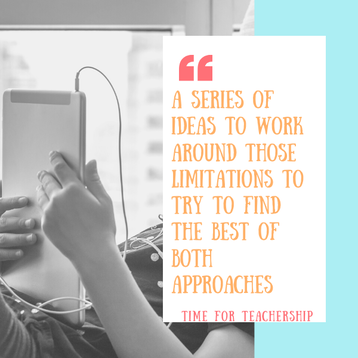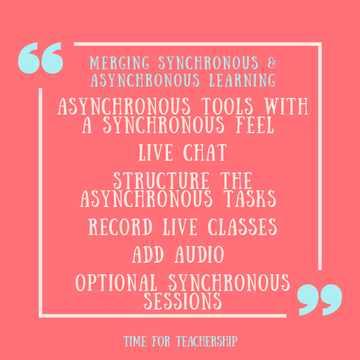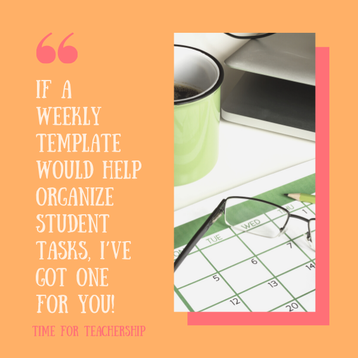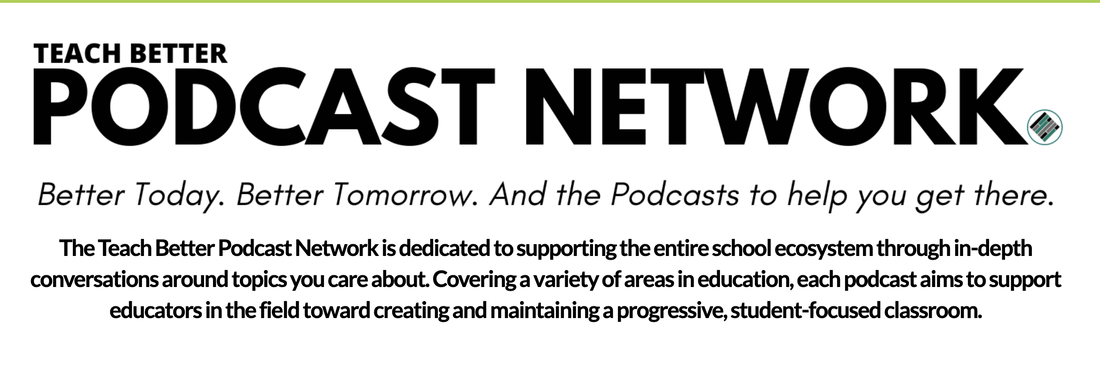|
In my last post, I talked about the benefits of synchronous (i.e., real-time) and asynchronous (i.e., not real-time) learning experiences during distance learning. If you haven’t read that one, I recommend going back and reading that post first. This post is for teachers who are looking for more flexibility than the dichotomy of “Live Classes vs. Asynchronous Tasks” provides. While there are limitations to each, this post is a series of ideas to work around those limitations to try to find the best of both approaches. Here we go... Asynchronous tools with a synchronous feel. To foster a sense of class community, you could use a tool like Flipgrid for students to check in or discuss content by posting a video of themselves. This way, students see each other’s faces and hear each other’s voices, and they have the freedom to post and respond when they are able to do so. Voxer is another tool for 1:1 check-ins teachers may want to use to contact students or families. It allows you to send a voice note without using your phone number, and folks can respond with a voice note when they are able. This eliminates the need to be on the phone at the same time while retaining the human connection element of voice. Use a live chat. If you designate a time to be online and working in a specific tool (e.g., a shared Google Doc, a Padlet, a discussion thread on your LMS), you can still achieve the synchronous benefit of getting immediate answers, but students don’t need to use up as much bandwidth because they’re not using video. Structure the asynchronous tasks. You may want to provide a sample schedule for students who struggle to structure their days. You could also create routines that emulate routines you would use during a live class to structure the learning. For example, I structure my live classes using a Define-Explore-Build framework, so I try to set up my asynchronous tasks in the same way: watch my mini lesson here, choose 2 resources to explore from this choice board, respond to these questions on Flipgrid. Keeping the same routines in the asynchronous space (though they may be slightly adapted in form), can help students adapt to the transition to distance learning. Record live classes. Of course, some schools do not allow teachers to record sessions, but if you do have permission to record classes, this can be a great way for students who missed a live class to still get the information and see their teachers and peers. Having a recording of the class also helps students who were on the live call, but struggled to focus or just want to rewatch part of the class. Add audio to asynchronous tasks. Recording a mini lesson using a screen sharing app like Screencastify or Screencast-O-Matic can help students feel more connected to you as a teacher and also support students who struggle to read lots of text or respond in writing. Similarly, you could add your own audio notes to an Edpuzzle or add video directions to a website using InsertLearning. You could use the Talk & Comment Chrome extension to add a voice note in any conversation on any platform where you can add text. If students are able to add the extension on their device, they can use it too! Optional synchronous sessions. You can hold space on a video call for students to connect with one another and talk about their lives. Live sessions don’t have to be academic classes; they can focus on the social and emotional well-being of students. While it would be great for all students to be able to attend these, the students who are unable to attend will not be penalized for missing required academic content, and it will not negatively impact their grades (if your school is still assigning grades). If a weekly template would help you organize student tasks, I’ve got one for you. Click the button below for this week’s freebie, which includes 3 templates with different ways to set up your weekly tasks. As always, please share any other combinations of synchronous and asynchronous experiences you’ve come up with! And, if you try one of the above strategies, I would love to hear how it goes. Keep being amazing, resilient educators.
1 Comment
Gertie
5/14/2020 09:01:59 pm
Bless you for sharing this! #sensmaking
Reply
Leave a Reply. |
Details
For transcripts of episodes (and the option to search for terms in transcripts), click here!
Time for Teachership is now a proud member of the...AuthorLindsay Lyons (she/her) is an educational justice coach who works with teachers and school leaders to inspire educational innovation for racial and gender justice, design curricula grounded in student voice, and build capacity for shared leadership. Lindsay taught in NYC public schools, holds a PhD in Leadership and Change, and is the founder of the educational blog and podcast, Time for Teachership. Archives
May 2024
Categories |





 RSS Feed
RSS Feed